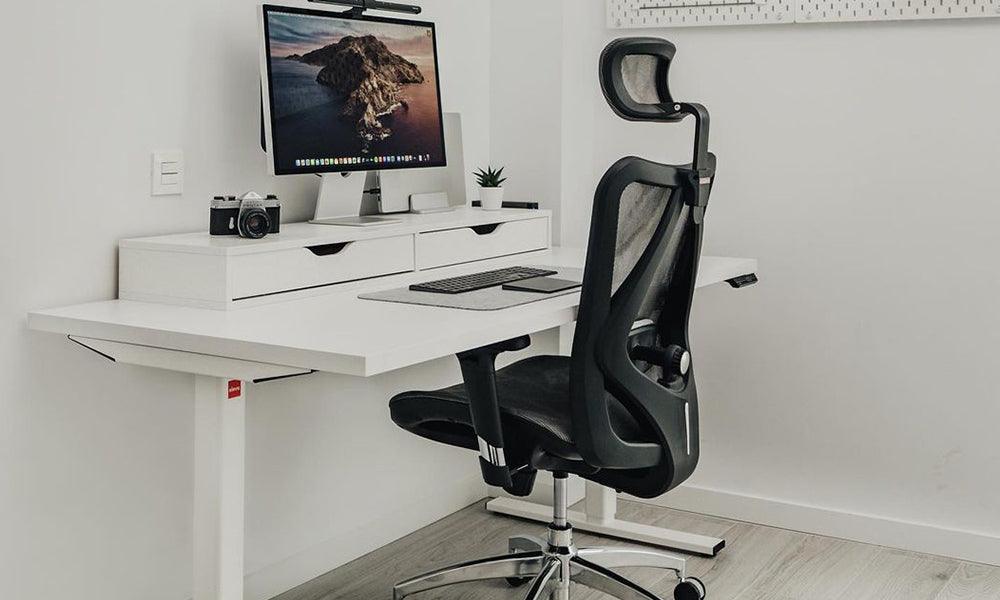In the evolving landscape of remote work and home office setups, finding the right furniture is essential for creating a comfortable and productive workspace. One common question that arises is, "What height chair do I need for a 30-inch desk?" In this comprehensive guide, we'll delve into the factors influencing chair height, the importance of ergonomics, and tips for selecting the perfect chair to complement your 30-inch desk.
Understanding the Basics
Before we dive into the specifics, it's crucial to understand the basics of ergonomics. Ergonomics is the science of designing and arranging items to maximize efficiency while minimizing discomfort. When it comes to desk and chair height, achieving the right balance is key to preventing musculoskeletal issues and enhancing overall well-being.
The Ideal Chair Height
For a 30-inch desk, the ideal chair height largely depends on the individual's height and personal preferences. Generally, the chair height should allow you to maintain a neutral posture, with your feet flat on the floor and your knees forming a 90-degree angle. This promotes better blood circulation, reduces the risk of back pain, and enhances overall comfort during prolonged periods of sitting.
Factors Influencing Chair Height
Desk Height:
The height of your desk plays a crucial role in determining the appropriate chair height. A 30-inch desk is considered on the lower side, so selecting a chair with adjustable height becomes essential to accommodate different users.
User's Height:
Tall individuals may find a standard chair too low for a 30-inch desk, leading to discomfort and potential health issues. Conversely, shorter individuals might struggle with a chair that is too high. Adjustable chairs provide the flexibility needed to cater to various heights.
Workspace Setup:
Consider the overall setup of your workspace. Are you using a monitor or a laptop? The type of equipment you use can impact the level at which you need to set your chair to maintain eye level with the screen.
Task Requirements:
The nature of your work also influences the ideal chair height. For tasks that require precision and attention to detail, a slightly higher chair might be more suitable, while a lower chair may be preferable for tasks that involve more movement.
Tips for Selecting the Right Chair:
Adjustability:
Opt for a chair with adjustable height settings. This feature allows you to customize the chair according to your desk height and personal comfort preferences. Pneumatic adjustment is a convenient option, allowing you to change the height effortlessly.
Lumbar Support:
Look for chairs with adequate lumbar support to maintain the natural curve of your spine. Proper lumbar support reduces the risk of lower back pain and discomfort during extended periods of sitting.
Seat Depth and Width:
Ensure that the chair provides sufficient seat depth and width to accommodate different body types comfortably. A seat that is too narrow or too deep can lead to discomfort and poor posture.
Material and Padding:
Consider the material and padding of the chair. Breathable materials and adequate padding contribute to comfort during prolonged sitting. Mesh-backed chairs are a popular choice for their breathability.
Mobility:
If your workspace requires frequent movement, consider a chair with wheels or a swivel base. This enhances mobility and allows you to access different areas of your desk without straining.
Testing Before Purchase
Whenever possible, test the chair before making a purchase. Sit in it for a few minutes to assess its comfort and make sure it meets your specific needs.
Conclusion
Creating a comfortable and ergonomic workspace involves careful consideration of the chair height, especially when dealing with a 30-inch desk. By understanding the factors influencing chair height, considering adjustability, lumbar support, seat dimensions, material, and mobility, you can make an informed decision when selecting the perfect chair for your workspace. Prioritizing ergonomics not only enhances productivity but also promotes long-term health and well-being in your home office environment.



































